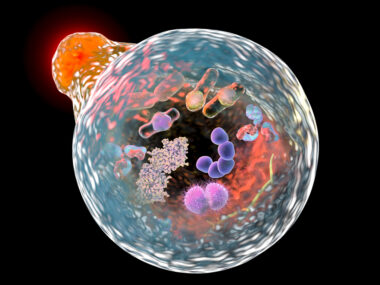Antidepressant Clears Toxins, Aids Cognition in Sanfilippo Type A Mice
Written by |

The antidepressant fluoxetine was able to improve cognition and reduce the buildup of toxic molecules in a mouse model of Sanfilippo syndrome type A, a group of researchers in Italy has found.
“We repurposed fluoxetine for potential therapeutics to treat human MPS-IIIA [Sanfilippo type A] disease,” the researchers wrote.
The study, “Fluoxetine ameliorates mucopolysaccharidosis type IIIA,” was published in Molecular Therapy.
Sanfilippo, also called mucopolysaccharidosis type III (MPS-III), occurs when there is not enough enzymes needed to break down a complex sugar molecule called heparan sulfate, which then builds to toxic levels inside cells. Sanfilippo type A is caused by mutations in the SGSH gene and is the most common, and usually the most severe, form of the disease.
Sanfilippo belongs to a group of diseases termed lysosomal storage disorders, which are broadly characterized by the buildup of toxic substances in lysosomes, the cell compartments responsible for breaking down cellular waste. An abnormal buildup of toxic proteins can disrupt lysosomal function, including the process used to clear the broken down waste, called autophagy.
While all organs can be affected in Sanfilippo, neurological symptoms, including progressive developmental delay and cognitive decline, tend to be the most severe. New treatments that are able to reach the brain are needed.
The researchers hypothesized that if existing brain-penetrating therapies for other conditions were able to restore lysosomal function and autophagy they may show promise for treating Sanfilippo.
In cultured cells from mice with Sanflippo type A, the research team screened 1,280 drugs already approved in the U.S. to search for promising candidates. They recognized that fluoxetine, a commonly used antidepressant that’s known to reach the brain, could lower levels of heparan sulfate inside lysosomes and increase debris clearance in the cells, suggesting a restoration of lysosomal function and autophagy.
The researchers next turned to a mouse model of Sanfilippo A where mice were treated with fluoxetine every other day for two months.
Results showed that, compared with untreated mice, brain and liver levels of heparan sulfate were significantly reduced and autophagy in the brain was increased after fluoxetine treatment.
In a cognitive test designed to evaluate whether the mice could learn from negative experiences, the researchers found that cognition was significantly improved after fluoxetine.
The results suggest that fluoxetine may be a promising treatment for Sanfilippo, the researchers said, noting, however, that the therapy doses used in the study were much higher than those typically used in human patients.
“While these initial results are encouraging, much more research is needed to fully understand the potential benefits, optimal doses and safety of Fluoxetine for potential long-term use in patients with Sanfilippo,” the Sanfilippo Children’s Foundation said in a press release.
The foundation previously awarded a team in Italy, including researchers from this study, a one-year grant to explore the role of autophagy as a therapeutic target in Sanfilippo.
While the team identified an investigational compound that could activate autophagy pathways and reduce inflammation, the treatment did not reduce heparan sulfate levels or improve behavior in a mouse model of type A Sanfilippo.






